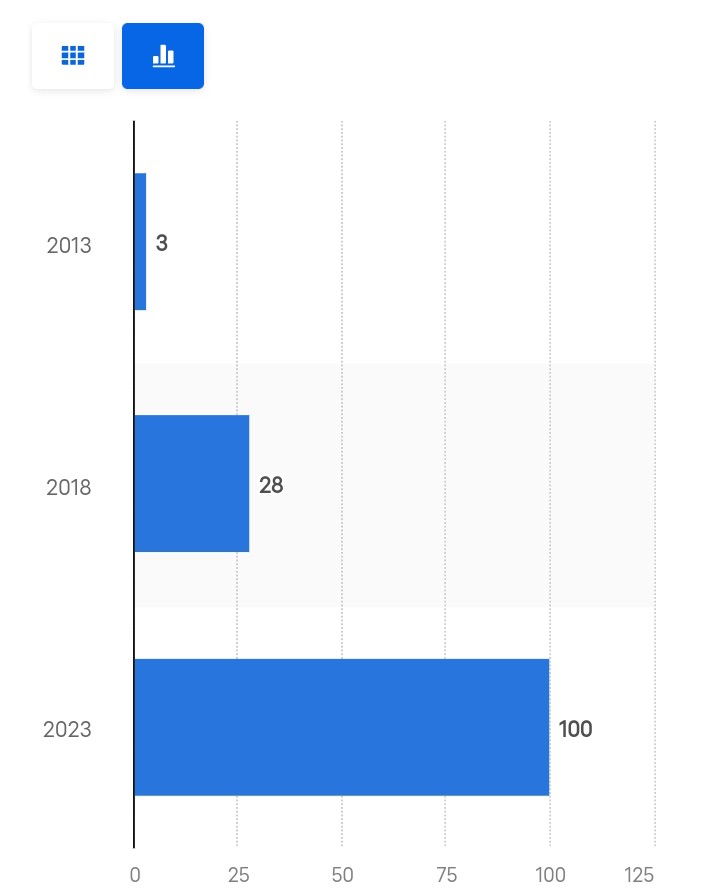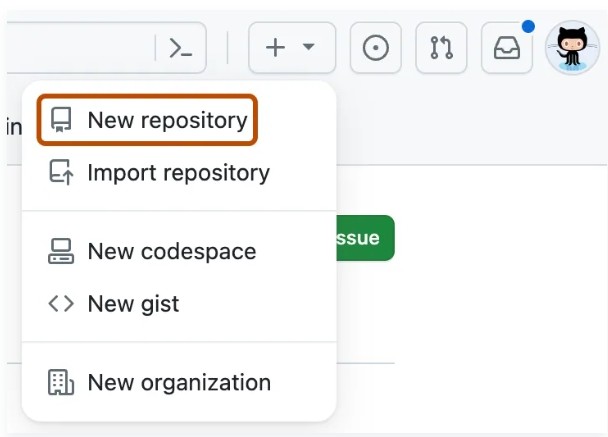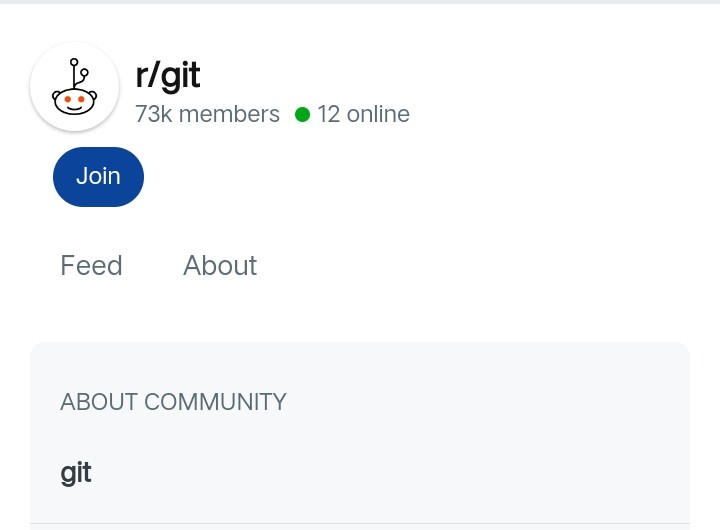Track
As a data practitioner, you rely on a version control tool to track code changes and collaborate with your team. Git is such a tool, and it’s used by over 100 million developers worldwide.
A good command of Git is more important than ever because companies now expect this skill for any role in software engineering and data.
In this article, I’ve covered everything you need to learn about Git and get on the right track, along with some resources and a detailed learning plan.
What Is Git?
Git is an open-source tool for managing different code versions. It's similar to a folder on your computer where you store your code. Every time you make a change, Git commits the changes as a snapshot, allowing you to apply or undo the changes.
It also supports teamwork so you can make your changes separately and merge them. If there's a conflict—for instance, two people change the same part of the code—Git allows you to decide which changes to keep and which to eliminate.

The number of developers using GitHub worldwide (in millions). Image source.
What makes Git popular?
With over 70% market share, Git has become a standard tool for developers worldwide. Here's what makes it so popular:
- Fast and allows you to work offline.
- Provides a safe environment for less experienced developers to experiment without risking the main codebase.
- Accessible for free without any cost barriers.
Main features of Git
Some of its most helpful features include the following:
- Distributed version control: Every user can have a full repository copy. This means you can work offline and still have access to all the data you need. If the main server fails, any user's repository can restore it.
- Open source: Anyone can download and modify it since it is licensed as free software. Git's local setup makes it responsive and easy to set up without the internet.
- Minimal data loss: Git is structured to avoid data loss. You can add data to the repository and cannot lose committed snapshots.
- Snapshots over deltas: Some version control systems track changes as deltas, which track changes from one version to the next. But Git allows you to save snapshots of the entire project at each commit. This way, you can access any file version at any point.
- Automation and CI/CD: Git can integrate well with CI/CD, and you can automate many tasks, such as testing, planning, project management, labeling, and onboarding. Doing so will streamline your workflows and maintain consistency.
- Branching and merging: This feature makes it easy to manage different development lines. First, you create separate branches to test ideas without disturbing the main codebase. Then, you merge these branches back into the main project.
For an easy way to start, learn how to set up Git in this guide.
Different Git platforms
Effective management of your team's codebase heavily depends on the Git hosting provider you choose.
That's why it's so important to go for a platform that fits your budget and integrates with your existing tools. Here, I've explained the three most popular Git platforms for you:
- GitHub is the go-to platform for open-source projects. It is beginner-friendly and hosts millions of public repositories. In addition, it offers basic project management tools like issue tracking and project boards.
- GitLab stands out for its exquisite CI/CD capabilities. It is ideal for working in a fast-paced environment where you need automated workflows and security features. That’s why you can use it to streamline your development process.
- Bitbucket is suitable for small teams and private repositories. It's free for teams of up to five users and provides basic CI/CD integration through Bitbucket pipelines. This tool is also known for integrating with Atlassian's other tools, such as Jira and Confluence. However, the support for the Bitbucket server ended in 2024, which may raise security concerns if you continue using it.
Learn Git Fundamentals Today
Why Is Learning Git so Useful?
Git has become a must-have skill set in today's job market, essential for anyone serious about getting into tech.
To help you get a better understanding of where it can be used, I’ve discussed its applications in various industries and how learning it can help you land high-paying jobs:
Git has a variety of applications
Git has become invaluable in multiple industries beyond traditional software development. Let’s look at these varied applications:
- Research and data science: With Git, you can manage scripts, Jupyter notebooks, and research papers.
- Web development: You can use it to manage website code, assets, and configurations. It is a key part of development for everyone, from solo developers to large teams.
- DevOps practices: DevOps teams can also use it to automate and manage their infrastructure with fewer errors in the deployment process.
- Mobile application development: Tools like GitHub Copilot assist in the mobile app development process. It provides instant code suggestions, fast prototyping, and fewer error chances when you’re working.
- Machine learning: You can use it in machine learning to version control code, notebooks, and models.
Git is also fundamental for data careers such as data and machine learning engineering. If you’re interested in pursuing those careers and see where Git fits in the bigger picture, check out our Professional Data Engineer and Machine Learning Fundamentals tracks.
There is a demand for skills in Git
If you just master basic Git commands, it would be enough to get started in tech. But as your role evolves, honing your existing Git skills to advance further is necessary.
Over 6,000 job listings on Indeed, from Tableau to C++ developers, highlight the demand for Git expertise. This is how much you can expect to earn in roles that require Git skills:
- Application Developer: $58,975 - $141,044 per year
- Controls Engineer: $102K - $150K per year
- Front End Developer: $42,500 - $155,500 per year
- Data Scientist: $125K - $203K per year
How to Learn Git and GitHub from Scratch in 2025
Git and GitHub have completely changed how you work on your code and collaborate on projects. They make things 10x easier for you. But if you're confused about where to start, here's how to go with it:
1. Understand why you're learning Git
Before you start learning Git, ensure that it's not just about learning to operate a tool but a whole project management approach. It would be best if you also consider your needs and goals. To do so, ask yourself the following questions before you start:
- How much do I already know about the tool?
- Do I want to learn the basics, or does my role require a deeper understanding of the tool?
- Do I want to contribute to open-source projects, collaborate with teams on a complex codebase, or streamline my personal workflow?
Once you’ve answered these questions, you can structure your learning path better.
2. Start with the basics of Git and GitHub
After you identify your goals, master the fundamentals and understand how they work. I’ve highlighted a few basic steps to start with:
Create a Git repository

Click “New repository” in the top left corner—image source.
To create a new GitHub repository, click “New Repository” at the top right corner of the page. The git init command can also create a new repository. Take into account that you need to create a GitHub account beforehand.
Record changes to the repository
Record even the minor changes to ensure you maintain snapshots of the changes. A couple of things GitHub will keep a record of include:
- Status of your files
- Newly created files
- Stage modified files
- Staged and unstaged changes
View the commit history
Since you'll often refer to the saved changes, learning how to view your commit history is important. By doing so, you won’t only know your work progress, but can also see:
- The person who made the changes
- The time when changes were made
- The changes that were made
Now, to do so, use the git log command.
Undo the stuff
Git doesn't have the traditional Undo feature to reverse your last action. That’s why it's quite complicated to undo changes in Git, and can result in severe losses.
So, you first need to review commits and find out what went wrong. For example, you may commit too soon or make a mistake in your commit message. There's also a possibility of accidentally staging a file. Since some actions are irreversible, this skill requires care to master.
The things you need to learn include:
- Finding which commit changes you want to revert:
git logcommand can help you. - Unstaging a staged file: Use different commands such as
git restore --staged file-to-unstage. - Undoing changes with Git restore:
git revert, andgit resetcommands are used for this. - Undoing local commits:
git reset --hardcommand allows you to destroy the commits you want and reset them to the previous state.
Learn how to do tagging
With tagging, you can mark important points in your project's history, such as release versions. For this purpose, you should learn to use the git tag command to list all the tags, create lightweight and annotated tags, and push the tags to a remote repository.
3. Master intermediate Git and GitHub skills
When it comes to intermediate Git and GitHub skills, you can never learn enough of them. But I’ve highlighted some of the most important intermediate skills that can add value:
Branching
As a data practitioner, you spend most of your time experimenting and fixing bugs. To do this, you can use Git branching to create a separate development line. These branches represent pointers to snapshots.
To become more advanced, you must also learn how merging allows you to bring changes from different branches together and integrate new code into the main project.
Cloning
With cloning, you can create a copy of an existing repository. It's the process of cloning all repository data from GitHub to your local machine. That's an important skill if you want to pull down a copy of your own or someone else's repository.
Let's compare standard cloning and cloning with submodules:
|
Features |
Standard cloning |
Cloning with submodules |
|
Command |
|
|
|
Creates directory |
Yes, default the repo name |
Yes, it also initializes submodules |
|
Pulls full history |
Yes |
Yes |
|
Protocol options |
HTTPS, SSH, Git |
HTTPS, SSH, Git |
Customizing Git
Every company and user has specific needs, so they use Git to adapt accordingly. For this, they use Git customization to integrate it within workflows. But to do so, they need to learn Git configuration and its different commands, which are organized into the following three levels:
- Local: Repository-specific settings that allow customization per project
- Global: User-specific settings that apply across all repositories
- System: Settings that apply to all users on the system
I’ve also included some commonly used Git configuration commands in the table below to help you master customization:
|
Commands |
Function |
|
|
Sets the global username for all commits |
|
|
Sets the default editor for Git commands |
|
|
Enables color output in the terminal |
|
|
Creates an alias for the checkout command |
|
|
Sets a commit message template for a specific repository |
4. Learn Git and GitHub by doing
Tutorials alone won't help you understand the full scope of what Git can do. Instead, you should start projects from scratch. Here's how:
- Participate in interactive sessions to practice Git commands in real time
- Review existing issues and pull requests on repositories
- Join open-source projects on GitHub
That's how you can build more practical knowledge of Git, which doesn't come from copying exercises from Google.
5. Build a portfolio of projects
A well-maintained GitHub portfolio can set you apart. It's not only about uploading your source code but also how well you manage projects and make regular commits. You can do this by creating an individual repository for every new project.
6. Keep challenging yourself
Mastering Git is a lifelong journey. Just as you constantly adapt to new programming languages, it's also important to stay updated with Git's new upgrades. This will help you learn new commands and integrate them into your projects.
An Example Git and GitHub Learning Plan
If you're starting Git from scratch, follow a learning plan to take manageable steps. I’ve prepared an example learning plan that covers the entire journey to master Git and GitHub:
Week 1-3: Introduction to version control and Git basics
- Version control systems: Get familiar with the concept of version control systems (VCS). Understand how Git differs from other VCS, such as Subversion and BitKeeper. Learn about the command-line interface and why it's essential to work with Git.
- Install and set up Git: Install Git on your system or sign up for GitHub and set up a username, email, and other preferences.
- Basic Git operations: Master the fundamental commands you need to create a new repository.
- View and undo changes: Learn which commands allow you to view the history of changes and undo mistakes. This will also help you understand how backtracking in a project will benefit you later.
Week 4-6: Advanced Git features and collaboration
- Branching and merging: Learn how Git branching lets you work on different features and fixes. Start with the commands to create, manage, and merge branches. Then, move on to practicing resolving conflicts.
- Remote repositories: To improve collaboration, learn how to work with remote repositories. Understand the concepts of forking, creating pull requests, and code reviews.
- Tagging and releases: Gain knowledge on Git tags and releases.
- Rebasing: Learn to use rebasing to clean up your commit history.
Week 7 and onwards: Mastering Git and beyond
- Submodules: Learn how submodules manage your project's dependencies on other Git repositories. To master this, you have to understand suitable commands.
- Advanced Git configurations: Learn how to customize your Git environment by configuring aliases.
Best Ways to Learn Git and GitHub
When mastering complex version control systems like Git, you shouldn't rely on one method. It's better to seek help from online tutorials, books, courses, and other learning resources.
Online courses
DataCamp offers beginner-friendly courses that break down complex Git and GitHub concepts into simple lessons. These courses provide you with knowledge of basic Git introduction and advanced GitHub skills. Once you go through them, you can confidently start any data science project.
Here are some of my recommendations for you:
- For understanding what’s Git: Introduction to Git Course
- For building your basic concepts: GitHub Concepts Course
Online tutorials
Traditional learning methods such as online tutorials are still widely used and effective in understanding complicated skills like Git and GitHub. At DataCamp, we also have detailed tutorials that provide step-by-step guides on Git and GitHub.
So, I’ve collected the most relevant tutorials that will help you learn how to install Git, do branch cloning, and some other advanced skills:
- For installing Git: Git Install Tutorial
- For gaining basic knowledge on GitHub and Git: GitHub and Git Tutorial for Beginners
- For learning how to clone a branch: Git Clone Branch Tutorial
- For understanding how to clone a specific branch: How to Clone a Specific Branch
- For using Git reset and revert commands: Git Reset and Revert Tutorial for Beginners
- For learning commands to merge branches and resolve issues: How to Resolve Merge Conflicts in Git Tutorial
- For understanding how to perform Git push and pull requests: Git Push and Pull Tutorial
Git cheat sheets
Who doesn’t love cheat sheets? I mean, they have been my go-to resources for remembering the smallest key terms and commands. That’s why I’d also recommend DataCamp's all-in-one cheat sheet for Git lovers:
- Download DataCamp Git Cheat Sheet
Books
If you think the era of books is long gone, you’re probably wrong because there are many amazing books on Git, and many people prefer learning from books.
If you’re also a bookworm, you can read these books on Git to become proficient:
- For basics: Git Pocket Guide: A Working Introduction
- For Git features: Version Control with Git
- For project management and collaboration: Getting Started with GitHub
Tips for Learning Git and GitHub
These tips will help you understand how much time you should spend practicing Git and how often you should practice it.
Choose your focus
Before you start your learning journey, you must decide where to keep your focus. Since Git is an additional skill, it's important to give time to polish your main skills. For example, as a data scientist, you can take a blended approach that divides your time between learning coding and version control.
Practice regularly
Learning from online tutorials and physical resources is excellent. However, you should grow an interest in practice-based learning before you engage with real-life projects. It provides hands-on experience, which most recruiters look for in candidates.
Work on real projects
The best way to master Git is to work on real projects and tackle problems you encounter in different fields, such as data science, machine learning, or software development. You can also make your projects public so others can contribute to your work and the GitHub online community.
Join a community
Online communities are always a great way to learn anything. So, if you’re learning Git, it’s time to join one. For this purpose, you can check out platforms like Reddit since they host active groups where you can ask related questions and provide solutions.

Git community on Reddit. Image by author
This is a great way to engage with experts and learn from their knowledge and experience.
Don't rush
While it's tempting to focus on speed to land a job quickly, this approach can leave gaps in your knowledge. That's why take the time to practice and explore different scenarios for a solid understanding of Git and its concepts!
Final Thoughts
Git has become a necessity to survive in this competitive job market, especially if you’re on the tech side. In fact, recruiters prefer Git over other VCS because it supports more efficient team collaboration and improves workflow.
You can use online tutorials and courses to start building your basic concepts. But it's equally important to work on real-life projects to gain hands-on experience and build a solid portfolio to grow in your career.
Apart from Git, if you're also looking to master a programming language and can't decide on one, Python ranked as the third most-used programming language in 2023. You can follow this guide to learn Python from scratch!
Become a Data Engineer
FAQs
How do I start with Git and GitHub as a beginner?
If you're in your early career, the complexity of Git and GitHub may overwhelm you. However, if you take small, consistent steps and follow a structured learning plan, you can master Git and GitHub in a few weeks.
Do I need to install Git to use GitHub?
Many beginners confuse Git with GitHub. Git is free software, while GitHub is a cloud-based hosting service with some paid features. You can use GitHub without installing Git first.
Do I need to know a programming language to use Git?
No, Git doesn't operate on any programming language. Since it's a command line tool, you can store your source code in any language.
Is Git useful for computer programmers?
Yes, today programmers prefer Git for many reasons. But team collaboration is where it excels. It saves them from the hustle of figuring out the latest part of the code when collaborating on a project.
I'm a content strategist who loves simplifying complex topics. I’ve helped companies like Splunk, Hackernoon, and Tiiny Host create engaging and informative content for their audiences.



